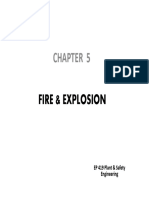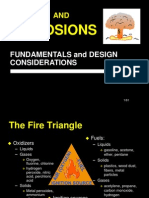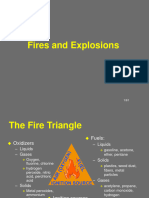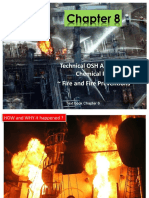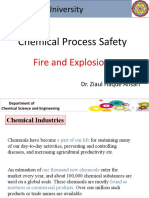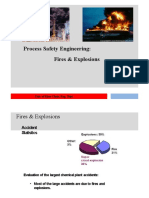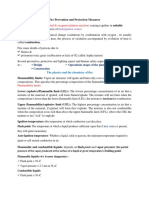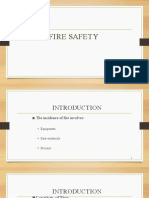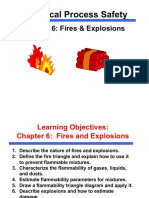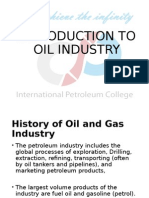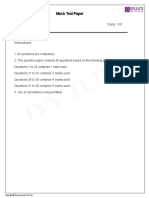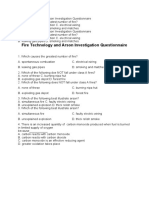0% found this document useful (0 votes)
20 views30 pagesFire & Explosion
The document provides an overview of various terminologies related to fire and explosion, including definitions of dust explosions, ignition sources, and the fire triangle. It discusses the characteristics of different types of fires and explosions, such as flash fires and BLEVE, and highlights the physical and environmental factors that contribute to fire and explosion risks. Additionally, it addresses the impact of explosions, the classification of explosions, and safety measures for controlling static electricity and ensuring explosion-proof environments.
Uploaded by
Anshika KapoorCopyright
© © All Rights Reserved
We take content rights seriously. If you suspect this is your content, claim it here.
Available Formats
Download as PDF, TXT or read online on Scribd
0% found this document useful (0 votes)
20 views30 pagesFire & Explosion
The document provides an overview of various terminologies related to fire and explosion, including definitions of dust explosions, ignition sources, and the fire triangle. It discusses the characteristics of different types of fires and explosions, such as flash fires and BLEVE, and highlights the physical and environmental factors that contribute to fire and explosion risks. Additionally, it addresses the impact of explosions, the classification of explosions, and safety measures for controlling static electricity and ensuring explosion-proof environments.
Uploaded by
Anshika KapoorCopyright
© © All Rights Reserved
We take content rights seriously. If you suspect this is your content, claim it here.
Available Formats
Download as PDF, TXT or read online on Scribd
/ 30


